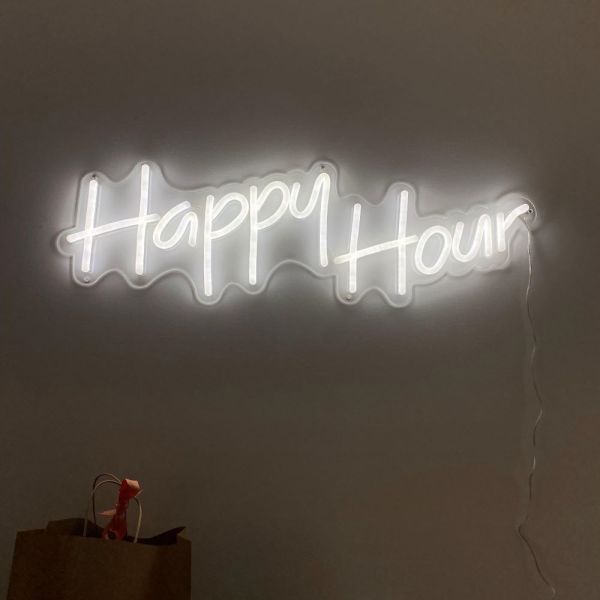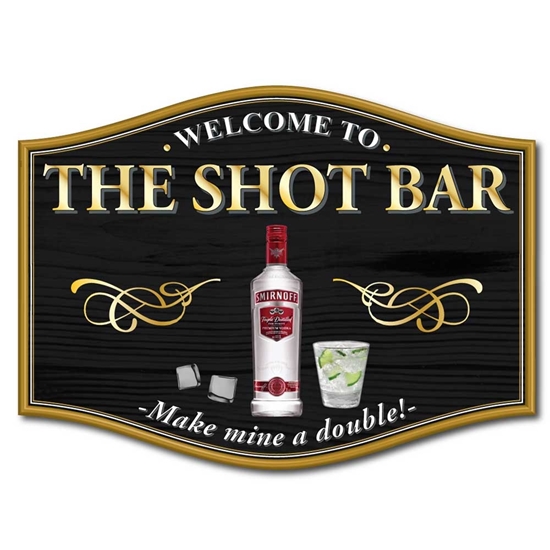Recommended News On Choosing Window Vinyl Signs
Recommended News On Choosing Window Vinyl Signs
Blog Article
What Are The Different Functions Of Bar Signposts?
There are a myriad of reasons of bar signposts. The reason for bar signs is different for each. Branding
Purpose of this logo: To strengthen and develop the bar's brand.
Features: Highlight the bar's name, logo and signature colors. The bar's design is meant to reflect the style and theme of the establishment.
Metal signs that are custom-designed with the bar's logo and name.
2. Information
Use: Provide vital details to patrons on the bar.
Features: Clear and easy-to-read text that communicates vital information like hours of operation, Wi-Fi passwords, house rules, or restroom areas.
The signs will indicate restrooms, or the hours of operation, on a wall next to the entrance.
3. Decorate your home with these Decorative Items
Objectives: To improve aesthetic appeal and the ambiance of the pub.
Features: The bar decor tends to be more artistic or themed. May not include any particular information or text.
A few examples include vintage advertising for beer, funny or humorous signs, theme artwork.
4. Promos
Goal: To advertise specific products or events.
Features: Design that is eye-catching, and highlights special offers, upcoming occasions or menu items. Some elements may be only temporary or changeable.
Examples: chalkboards with daily specials; banners that promote happy hour deals and posters to advertise upcoming events.
5. Directional
Guide patrons in the bar.
Features: Use clear arrows to direct customers through the bar area, such as, where the bathrooms or exits and various areas of the bar are.
Examples: Arrows for direction within various seating areas.
6. Regulatory/Compliance
Objective: To meet legal requirements and ensure the safety of our customers.
Specifications: Signs that are required to meet legal requirements, such as warning of smoking areas, maximum occupancy limits or emergency exits.
Examplesinclude "No Smoking", occupancy limits, evacuation signs for emergencies.
7. Interactive
Goal: To engage customers and create a interactive experience.
Features: Elements designed to facilitate interaction with patrons including interactive surfaces or write-on surface.
Signs that have QR Codes linking to menus that are digital (or social media) or chalkboards that allow customer messages are a few examples.
8. Thematic
Purpose: To create an atmosphere or theme.
Highlights: Signs that are aligned with the theme of the bar, which contribute to the overall experience and the overall atmosphere.
Examples: Pirate-themed signs in a bar with a maritime theme or rustic wooden signs for a bar themed in the countryside.
9. Menu
Scope: To display the menu of food items at the bar.
Features: Clearly lists beverages and food items, often with prices. It may be fixed or changeable.
Example: digital screens with rotating menus and wall-mounted menus for drinks.
Every bar sign is designed for a specific reason. Its design is based on its role within the bar. By understanding the differences between the different types of signs, bar owners will be able to select and position signs in a manner that improves patrons' experience as well as meets their operational requirements. See the most popular make a pub sign tips for site tips including garden bar sign personalised, cocktail bar sign, personalised bar signs, personalised beer sign, bar sign outdoor, outdoor personalised bar sign, the staying inn pub sign, personalised sign for bar, a bar sign, small pub signs and more.
What Are The Differences Between Bar Signs In Terms Readability
There are a variety of factors that affect the readability of bar signage like font size, and color contrast. Let's take a review of the elements which affect readability. Font Choice
Specifics of the Sign The Sign is a Typeface.
Simple serif or sans-serif fonts, such as Arial and Helvetica.
Stylized fonts: Fonts that have patterns that are decorative or scripted can be difficult to discern from a distance or even in dim light.
Impact: Clear and legible fonts make it easy for customers to comprehend the information.
2. Font Size
The sign's characteristics include the font size on the sign.
Large fonts. It is easier to read from afar. Ideal for exteriors and main signage.
Small fonts are ideal for signs or menus that are to be viewed up close.
Impact The font's size must be suitable for the distance from the point at which it is read. Larger text is more easily read from an extended distance.
3. Color Contrast
Characteristics: The difference in color between the text and the background.
High Contrast: Dark text on a light background, or lighter text with a dark background (e.g., black and white, or white on black).
Low contrast: The text may be difficult to read if the hues of the text and background are the same.
The impact: A high contrast increases the readability of text by making sure that text is clearly discernible.
4. Lighting
Specifications: The way in which the sign is lit.
Well-Lit Signs - Front or Back-lit signs improve visibility under low-light conditions.
Signs with poor lighting Poorly lit signs are difficult for users to read in low light or at night.
Effect: Signs properly lit are visible and clear in any environment, even dark ones.
5. Material and Finish
Signs are distinguished by the kind of material used as well as the final appearance.
Matte Finish: Text becomes easier to read and has less reflection and reflection and.
Glossy Finishes: They can create glare when they are lit directly. This can affect the ability to read.
Impact: The correct material and finish improve visibility by minimizing glare and reflections.
6. Text Layout
The sign's design is one of the most distinctive features. text on a sign.
Clear Hierarchy. Information can be organized by headings, subtitles, and body text.
Unorganized layout: Signs could be difficult to read if they are clutter-filled.
Impact: A clean organized layout lets customers quickly grasp and locate information.
7. Viewing Distance
Characteristics
Long Distance: Larger font and high contrast are crucial.
Short Distance: While smaller fonts are acceptable however simplicity and clarity are crucial.
Impact: Signs must be constructed with the distance of viewing in mind to ensure the sign is readability.
8. Placement
The physical place of the sign inside the bar.
The ideal position is at eye level, not obstructed and well-lit.
Poor Positioning Poor Placement: Too high, obscured or poorly lit.
Impact: The placement of signs makes them easy to read by patrons.
Signs for Bars that are easy to read
Exterior Signs
Characteristics: High contrast text (backlit, neon, etc.) placed in a prominent place.
Impact: Draws attention of customers and can be seen from afar.
Menu Boards
The characteristics of a chalkboard or backlit board include high contrast clear headings, large font for product names, and great lighting.
Impact It is easy to understand, and customers can choose what they want. It enhances the overall experience.
Directional Signs
Its characteristics are simple arrows, big text and high contrast.
Impact: Facilitates the flow of people through the space, and increases the overall level of satisfaction.
Promo Signs
Characteristics: Large text for advertising, high contrast and well-lit. Placed in high-traffic zones.
Impact: Encourages customer engagement through effective communication of special offers and events.
Factors Affecting Readability
Lighting in the ambient can have a major impact on the readability of signs. It is easier to read in bright areas.
Patron movement Bars where there is a lot of activity, signage needs to be easily read by patrons on the move. It is essential to use large, high-contrast signs in such instances.
Choose formats that are simple to read and keep up-to-date (e.g. digital displays or chalkboards) for signage that change regularly.
Bar owners can enhance the customers' experience by paying attention to these aspects. They can ensure that signs are not just visually appealing but also highly read. Read the most popular see post for man cave signs for blog advice including pub signs, personalised garden bar signs, outdoor personalised bar sign, personalised outdoor pub signs, pub signs made, a bar sign, personalised outdoor bar signs, bar signs for garden, gin bar sign, hanging home bar signs and more.
What Are The Distinctions In Bar Signage That Are Related To Interactivity?
The bar sign's interactivity can vary to attract customers and enhance their experience. Below are some examples of bar signs that differ in their interactivity. Static Signs
Traditional Design: Signs that are static relay information without any interactive elements.
Common types include printed posters, painted wall murals, and the standard neon signs.
2. Digital Displays
Digital Signs permit multimedia content and real-time animations.
Displays with touchscreens offer interactive content, for example promotional or games.
Benefits: Draw attention to dynamic information and encourage patron interaction.
3. QR Codes
QR Codes can be linked directly to social media profiles or menus.
Benefits: Give quick access to information about promotions or loyalty programs.
4. LED Screens
Dynamic Messaging: LED screens can display scrolling text, animations, or video content.
Interactivity: LED screens with touch capabilities let patrons interact with content, such as selecting menu items or playing games.
Benefits: Attract attention, communicate information clearly, and create immersive experiences.
5. Projection Mapping
Immersive Experiences Projection mapping alters the surfaces providing interactive visuals and storytelling.
Interactivity - Guests are able to engage with projected elements, such as virtual games or interactive games.
Benefits: Provide memorable experiences, enhance the ambience, and promote social interaction.
6. Augmented Reality (AR).
AR enhances the real world by overlaying digital content to the physical world. This allows for interactive experiences.
AR-enabled Signs: AR signs allow customers to interact and view virtual elements, such as cocktail recipes, or play virtual games.
Benefits: Unique experiences draw customers in and will help stand out from other bars.
7. Motion Sensors
Motion sensors sense movement and activate interactive signage.
Interactivity: Signs that respond to the movement of the patron can display animations, change the content, or even send customized messages.
Benefits You can create immersive environments that amaze your customers.
8. Social Media Integration
Online Interaction: Signs that include hashtags or social media handles may encourage patrons online interaction.
Users-generated Content: Encourage patrons to share photos of signage on social media, extending the reach of the bar and its visibility.
Benefits: Increase involvement with the community, boost the visibility of your brand, and also create user-generated contents.
9. Interactive Lighting
Dynamic Effects Neon or LED signs with Interactive Lighting are able to respond to Sound, Touch, or motion.
Signs that interact change their color, brightness and patterns in response to patron interactions or environmental clues.
Benefits : Create immersive spaces, enhance ambience, and draw interest of the.
10. Gamification
Interactive Games: Displays with interactive games and challenges that entertain customers and encourage participation.
Reward: Give discounts or other incentives to players who finish challenges or who win games.
Benefits: Increase dwell times increase social interaction, and encourage frequent visits.
Bar owners can design engaging experiences by using interactive elements in their signage. It will attract customers, enhance brand recognition and aid in distinguishing their business from other competitors. View the best bar runners advice for website advice including bar sign design, personalised cocktail bar sign, outdoor home bar signs, large bar signs, bar sign design, pub signs for home bars, bar signs for home, outdoor home bar signs, bespoke bar signs, the pub sign and more.